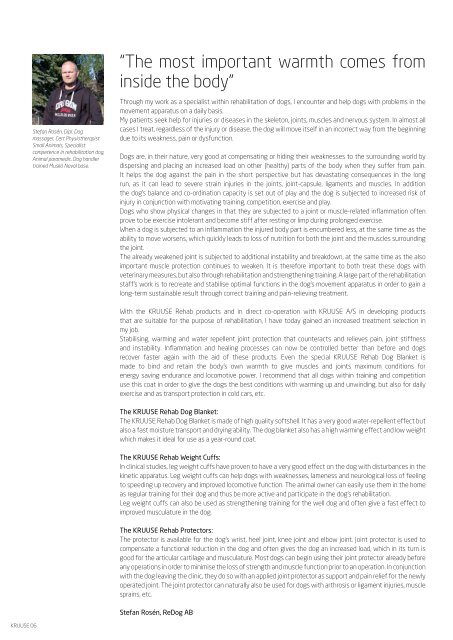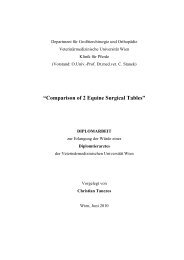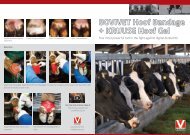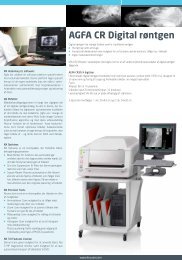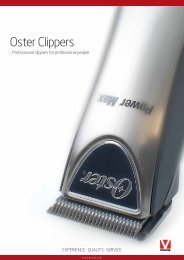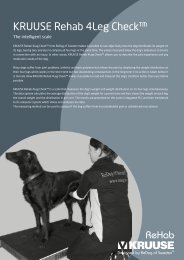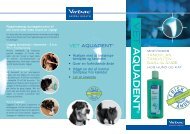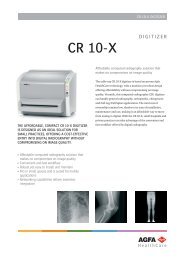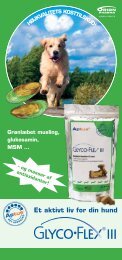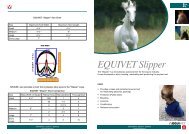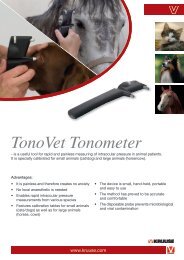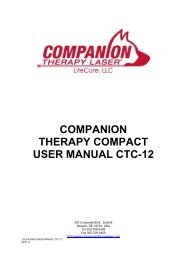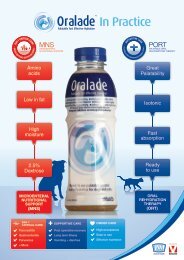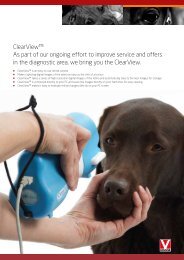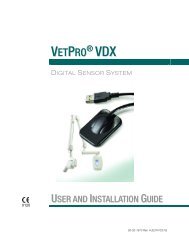KRUUSE Rehab Catalogue
KRUUSE Rehab Catalogue
KRUUSE Rehab Catalogue
You also want an ePaper? Increase the reach of your titles
YUMPU automatically turns print PDFs into web optimized ePapers that Google loves.
<strong>KRUUSE</strong> 06<br />
Stefan Rosén, Dipl. Dog<br />
massager, Cert Physiotherapist<br />
Small Animals, Specialist<br />
competence in rehabilitation dog,<br />
Animal paramedic, Dog handler<br />
trained Muskö Naval base.<br />
“The most important warmth comes from<br />
inside the body”<br />
Through my work as a specialist within rehabilitation of dogs, I encounter and help dogs with problems in the<br />
movement apparatus on a daily basis.<br />
My patients seek help for injuries or diseases in the skeleton, joints, muscles and nervous system. In almost all<br />
cases I treat, regardless of the injury or disease, the dog will move itself in an incorrect way from the beginning<br />
due to its weakness, pain or dysfunction.<br />
Dogs are, in their nature, very good at compensating or hiding their weaknesses to the surrounding world by<br />
dispersing and placing an increased load on other (healthy) parts of the body when they suffer from pain.<br />
It helps the dog against the pain in the short perspective but has devastating consequences in the long<br />
run, as it can lead to severe strain injuries in the joints, joint-capsule, ligaments and muscles. In addition<br />
the dog’s balance and co-ordination capacity is set out of play and the dog is subjected to increased risk of<br />
injury in conjunction with motivating training, competition, exercise and play.<br />
Dogs who show physical changes in that they are subjected to a joint or muscle-related inflammation often<br />
prove to be exercise intolerant and become stiff after resting or limp during prolonged exercise.<br />
When a dog is subjected to an inflammation the injured body part is encumbered less, at the same time as the<br />
ability to move worsens, which quickly leads to loss of nutrition for both the joint and the muscles surrounding<br />
the joint.<br />
The already weakened joint is subjected to additional instability and breakdown, at the same time as the also<br />
important muscle protection continues to weaken. It is therefore important to both treat these dogs with<br />
veterinary measures, but also through rehabilitation and strengthening training. A large part of the rehabilitation<br />
staff’s work is to recreate and stabilise optimal functions in the dog’s movement apparatus in order to gain a<br />
long-term sustainable result through correct training and pain-relieving treatment.<br />
With the <strong>KRUUSE</strong> <strong>Rehab</strong> products and in direct co-operation with <strong>KRUUSE</strong> A/S in developing products<br />
that are suitable for the purpose of rehabilitation, I have today gained an increased treatment selection in<br />
my job.<br />
Stabilising, warming and water repellent joint protection that counteracts and relieves pain, joint stiffness<br />
and instability. Inflammation and healing processes can now be controlled better than before and dogs<br />
recover faster again with the aid of these products. Even the special <strong>KRUUSE</strong> <strong>Rehab</strong> Dog Blanket is<br />
made to bind and retain the body’s own warmth to give muscles and joints maximum conditions for<br />
energy saving endurance and locomotive power. I recommend that all dogs within training and competition<br />
use this coat in order to give the dogs the best conditions with warming up and unwinding, but also for daily<br />
exercise and as transport protection in cold cars, etc.<br />
The <strong>KRUUSE</strong> <strong>Rehab</strong> Dog Blanket:<br />
The <strong>KRUUSE</strong> <strong>Rehab</strong> Dog Blanket is made of high quality softshell. It has a very good water-repellent effect but<br />
also a fast moisture transport and drying ability. The dog blanket also has a high warming effect and low weight<br />
which makes it ideal for use as a year-round coat.<br />
The <strong>KRUUSE</strong> <strong>Rehab</strong> Weight Cuffs:<br />
In clinical studies, leg weight cuffs have proven to have a very good effect on the dog with disturbances in the<br />
kinetic apparatus. Leg weight cuffs can help dogs with weaknesses, lameness and neurological loss of feeling<br />
to speeding up recovery and improved locomotive function. The animal owner can easily use them in the home<br />
as regular training for their dog and thus be more active and participate in the dog’s rehabilitation.<br />
Leg weight cuffs can also be used as strengthening training for the well dog and often give a fast effect to<br />
improved musculature in the dog.<br />
The <strong>KRUUSE</strong> <strong>Rehab</strong> Protectors:<br />
The protector is available for the dog’s wrist, heel joint, knee joint and elbow joint. Joint protector is used to<br />
compensate a functional reduction in the dog and often gives the dog an increased load, which in its turn is<br />
good for the articular cartilage and musculature. Most dogs can begin using their joint protector already before<br />
any operations in order to minimise the loss of strength and muscle function prior to an operation. In conjunction<br />
with the dog leaving the clinic, they do so with an applied joint protector as support and pain relief for the newly<br />
operated joint. The joint protector can naturally also be used for dogs with arthrosis or ligament injuries, muscle<br />
sprains, etc.<br />
Stefan Rosén, ReDog AB


